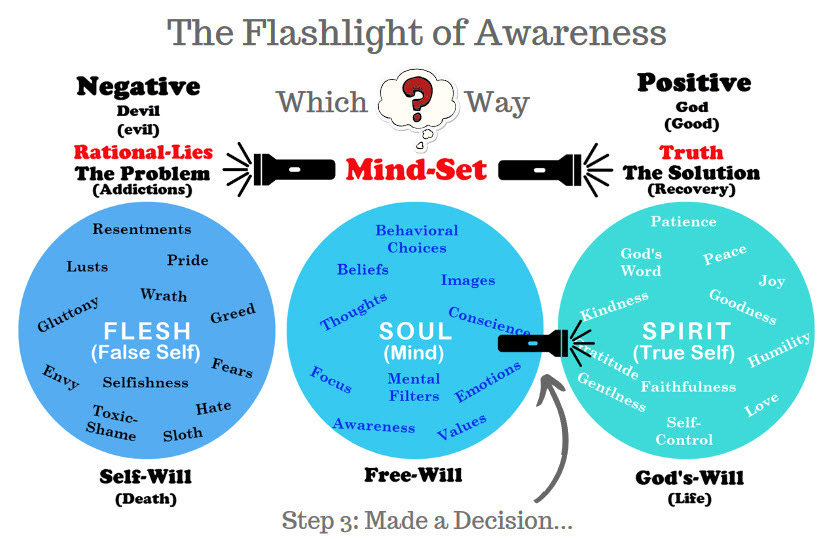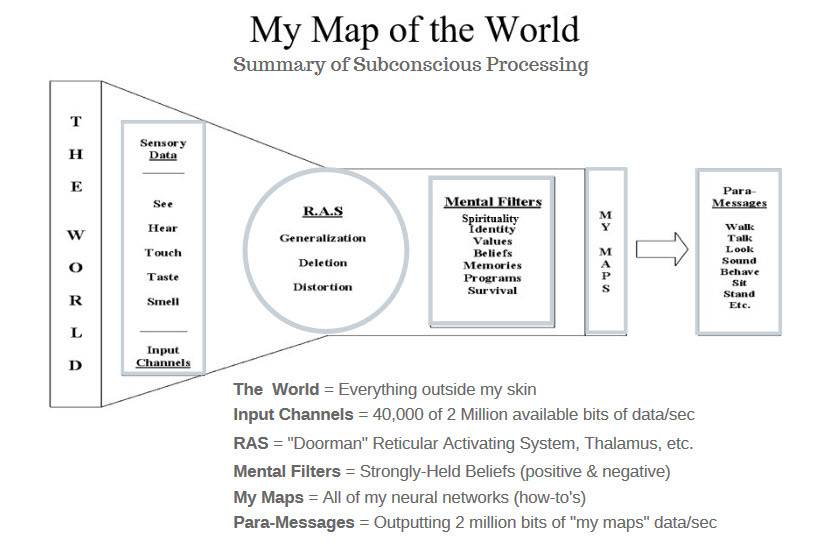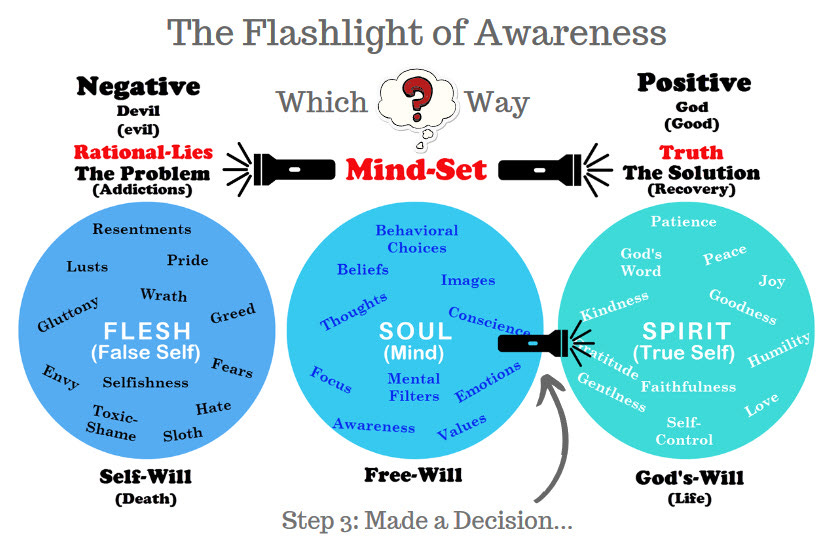The Neuroplasticity videos, we learned about neural networks and how everything that we learn, good, bad, and ugly is encoded upon the neural circuitry of our brain and nervous system. This means everything we learn, including negative self-talk, trauma memories, emotional wounds, and limiting beliefs, just to name a few.
Whenever one of these neural networks is triggered in the brain, it sends congruent electrical chemical impulses throughout the nervous system. One of the primary takeaways about this is the fact that we feel the way we think, then we think the way we feel, then we feel the way we think, and we think the way we feel, and so forth. This is partly because the images and self-statements, the thoughts and beliefs in our psychological cognitive processes get converted by the brain into bio chemical signals in the body by the endocrine system, beginning somewhere near the pituitary glands. Trauma expert Bessel Vander Kolk points out that the psychological and biological elements of trauma and other negative experiences accumulate and get stored in the body or the nervous system. His book is appropriately entitled The Body Keeps Score. So over time, the brain and nervous system becomes conditioned to respond to triggers and queues with repetitive behaviors and familiar emotional themes.
A major point here is that the neural networks are not isolated to the brain, but function throughout the nervous system, and they accumulate and store experiences of both pleasure and pain over time because neurons that fire together, wire together. Anytime they fire, those connections get stronger. This is why the brain and nervous system is what I refer to as the biological location of change. We are not simply trying to change your mind about something. We're trying to work through reconditioning your nervous system.
In the flashlight of awareness videos, I introduce several important therapeutic factors for reconditioning the brain and nervous system. First is the notion that there is no negative, only the absence of positive. There is no darkness, only the absence of light. There's no cold, only the absence of heat. No sickness, only the absence of health. There's no hate, only the absence of love. No greed, only the absence of contentment. Second is the idea that negative core beliefs and mental filters amount to what I call rational lies because they look true, sound true, and feel true, but they are not true. They are lies because they are negative and therefore do not exist.
There are three sources of these rational lies. One of these is, of course, our enemy Satan, the father of lies. Another is the world, and another is the appetites of our flesh. Thirdly, we realize these rational lies by focusing our awareness on them. In the videos, we talked about the Olympic athlete's experiments using neuroscience to improve athletic performance. In short, what those studies found was that the brain and nervous system does not know the difference between real and imagined. It only knows what we show it on the movie screen of our mind, also known as your mind's eye. That would be the medial prefrontal cortex right behind the middle of your forehead. In other words, when we entertain negative images, thoughts, core beliefs, and mental filters in the mind's eye, the brain and nervous system reacts as if they are real, which is why I hyphenate the term real lies, R EAL hyphen IZE. By focusing our awareness on those rational lies as if they are real, we are realizing them, making them real. Now, not knowing the difference between real and imagined, the brain and nervous system react as if they are real, so they might as well be real.
Here's an example of how this might work. Imagine you walk into a bathroom to wash your hands. When you put your hands down into the sink, you see a Scorpion there, and suddenly instinctively jerk your hands back out. Then you notice it's only a plastic toy Scorpion. Someone has put it there to play a prank on you. When you realize the truth that it was only a plastic toy, that threat disappears, and you just throw it aside and wash your hands.
There are three things I want you to remember, most of all, about the iceberg model going forward. Notice that beneath the surface of our awareness, there's a free-floating mass of pain that I call the false self. That pain consists of an emotional wound of abandonment, an emotional infection of shame, and an emotional scab of contempt. Keep in mind our notion that there is no such thing as negative, only the absence of positive, and consider how that fits with this free-floating mass of pain. As I've said in the video, that pain is described in many different ways, usually something along the lines of a black hole, a void, a vacuum, an emptiness, an ache, a longing, and so forth.
These are all manifestations of nothingness or sensations of absence. And in this case, pain is the absence of comfort. Again, no such thing as negative, only the absence of positive. Because we carry that pain inside or that emptiness inside, we shut down our internal focus and enhance our external focus. Then we pour a slab of concrete over the top of it and develop a public image like a mask or a cover up. I refer to these coverups as the invented self. We dread being exposed for fear of more abandonment, shame, and contempt. While the external focus and the coverup of the invented-self deflects and help us avoid exposure, it does not relieve that emptiness in that pain. So, at the tip of the iceberg, we have a list of common objects and activities that we discover that provide temporary comfort and relief. Remember, the pain is the absence of comfort, and carrying around that black hole or void or that emptiness is a set up for us to begin to seek comfort. And if we have only an external focus, then we must look outside of ourselves for comfort and relief. So, these addictions are all attempts to find comfort and relief by reaching to something on the outside to fill the nothingness and relieve the pain on the inside.
This outer reach for inner comfort backfires and creates more problems than it solves, including addiction in its various forms. The Life Scripts and Parts Matrix model is a chart that helps us zoom in on the precise location of the neural network, also known as part-of-self that we want to heal. At the top of the chart are two boxes, self-actualization or growth mode and self-preservation or survival mode. It's when we get triggered into self-preservation and survival mode that the flowchart becomes active. At that point, we become actors acting out a script, hence the term life scripts. Each part has its own script. When we're triggered, we go into that script. When we are in growth mode, we are in the present moment autonomous of scripts and free to choose our thoughts, feelings, and behaviors proactively rather than reactively letting our thoughts, feelings, and behaviors choose us. A primary point I would like to make here is that that layer of abandonment, shame, and contempt, that free floating mass of pain, the emptiness in the center of our iceberg causes dysfunctional parts of self to emerge. The emotional wound, infection, and scab creates a lens through which the normally healthy fight, flight, or freeze instinct becomes active.
This wound of abandonment accumulates within the attachment drive highlighted here. This is the youngest part of our personality. We come into the world totally dependent on our caretakers. We have a primal need for connection and a primal fear of abandonment wired into our nervous system. Whenever there's any threat, the alarms go off in that nervous system. As an infant, we don't have any psychological equipment to understand or cope with this alarm.
We have the instinct to cry for help. If that cry is not heard, then we have a cry for rescue, also known as a scream. When triggered, the primal fear of abandonment is a feeling of desperation that sweeps through the nervous system as if the child is dying because that's what it feels like. Triggers come in many forms at this age, usually tied to unmet dependency needs. An infant needs a reliable caretaker to evaluate and respond to their needs. If the child is wet, it needs change. If it's hungry, it needs fed. If it's tired, it needs a nap. If it's fussy, it needs soothing. In the ideal situation, a child always has an attentive, attuned caregiver who is reliably able to respond to those cries for help.
When those cries go unanswered, the cry turns to a scream, which can be interpreted as a cry for rescue. Each time this happens with any intensity, the sensations that come with it accumulate within the nervous system. The neural circuitry for abandonment issues begins to form and take root. So, the reliability and structure provided by the caretakers has a lot to do with the initial priming of the nervous system. In mild cases of abandonment, the child is still able to develop secure attachments with people. Moderate to severe cases of unreliability can prime the nervous system for abandonment issues and dysfunctional attachment styles in adulthood. In the video course on mental filters and normalcy bias, we learn how strongly held core beliefs become strengthened. These mental filters spring from the earliest experiences in our life. Many times, the alarms go off, priming the nervous system for trouble later. Then about seven or eight years old, when we develop the ability to think and have questions, including self-talk, the inner critic comes along with all the statements that form some of those core beliefs, such as, I'm not lovable, I'm not good enough, I'll never amount to anything, or no one could love me the way I am.
When core beliefs are frequently negative and a way of life for the child, the nervous system of that child is primed to search for evidence that these core beliefs are true. The flashlight of awareness is conditioned to focus on those negative core beliefs, what I call rational lies, because they look true, sound true, and feel true, but they are lies. There's no negative, only the absence of positive. As stated earlier, focusing on rational lies has the effect of realizing them or making them real. Remember, the brain and nervous system cannot distinguish between real and imagined. It simply reacts to whatever we show it on the movie screen of our mind's eye. So, if it looks true, sounds true, and feels true, when we entertain those thoughts, it might as well be true, because our nervous system will react as if it is, even though it's a lie. And neurons that fire together, wire together, making these core beliefs even stronger every single time they are triggered. As we see here, when our flashlight of awareness locks on to the false self, all those negative contaminations flow freely into my moment-to-moment experience of being me, my mind, or my consciousness.
Then I feel the way I think, think the way I feel. Then I feel the way I think, then think the way I feel. And well, you get the point. Our challenge becomes to recondition the nervous system by focusing the flashlight of our awareness on the true spiritual self. As we can see here, when I do that, all the goodness and positivity flows into my moment-to-moment experience of being me. And since it's already real, then I don't have to realize it. I simply enjoy it. So in order to recondition our nervous system to automatically point the Flashlight of Awareness in the right direction, we first need to be able to stay in the present moment. Everything I just said is in the past. Everything I'm going to say is in the future. That present moment is the small sliver of time referred to as right now. The next thing we need to do is to learn how to direct our awareness. This requires mindfulness, letting our awareness direct itself is a mindless activity. We can call it default mode, and it results in the flashlight snapping back in the wrong direction because that's what it's conditioned to do.
This will happen more often than not because our default mode is automated mindless activity. Staying in the present moment, directing our awareness in the right direction, right now, takes effort, but it pays huge dividends. Will we be able to do that all day? No, but we can do it more often than we have been doing. This must be why Jesus once said, “take no thought for the morrow, for the morrow shall take thought for the things of itself. Sufficient unto the day is the evil thereof.” This wisdom is reinforced in the 12-step program with the admonishment to take it one day at a time and expect progress, not perfection. We know our flashlight is pointed in the wrong direction when we find ourselves in the victim mindset. This is the language of reactivity that we call survival mode. We know our flashlight is pointed in the right direction when we find ourselves in creator mentality. This is the language of proactive growth mode. Again, watch all of the videos to learn more about each of them. This will build a solid foundation for growth, healing, and recovery from whatever it is you're facing, whether it be addiction, codependency, or adult child syndrome.









